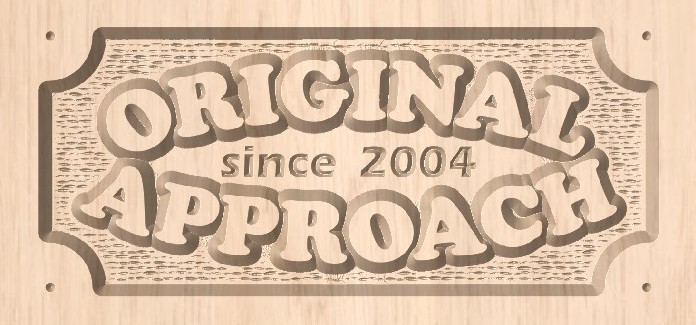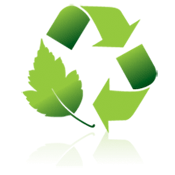|
GUIDELINES FOR SELECTING SAFE TOYS
In 1994, Congress passed The Child Safety Protection Act (CSPA). This public law requires toy manufacturer’s to place warning labels on toys containing small parts, including balls, marbles, and other choking hazards. The label must state that the toy is not intended for use by children under the age of three. Additionally, the CSPA increased the size of banned small balls permitted in toys, because of the choking hazard associated with round objects. Even though the Consumer Product Safety Commission oversees the labeling on toy safety, parents and other adults must take responsibility for making sure that their child’s toys are safe. Original Approach takes toy safety very seriously and hope you will too.
Age appropriateness.
The most important consideration when selecting toys is the child’s age and developmental level. Toys that may be safe for older children -- like a hobby or chemistry set or games with small pieces -- can be extremely dangerous in the hands of a smaller child. A toy that is too advanced will probably be misused and the likelihood of injury will increase.
Small parts
Choking remains the leading cause of toy deaths; most often involving ingested balloons, balls, and small toy parts. Tiny toys and toys with small removable parts can be swallowed or become lodged in a child's throat, windpipe, ears or nose. The seams of poorly constructed stuffed dolls or animals can break open and release small pellets that can be swallowed or inhaled.
Sharp edges or points
Avoid toys with sharp or pointed edges. Toys of brittle plastic or glass can be broken easily, leaving dangerous, sharp cutting edges and knifelike sharp points. Metal and plastic toys sometimes have sharp edges due to poor construction. Pins and staples on dolls' clothes, hair and accessories can easily puncture and unsuspecting child.
Clear instructions
Read the instructions for use before purchasing toys. Make sure that they are clear and will be understood by the child. Too often, children see toys advertised on television that look simple to set up and play, but in reality require more skill than the child possesses.
Loud noises
Consider the noise level of the toy. Some toys, like caps and guns, can produce sounds at noise levels that can damage hearing. The law requires that the following label be placed on boxes of caps producing noise above a certain decibel: "Warning- Do not fire closer than one foot to the ear. Do not use indoors."
Propelled Objects
Toys that shoot small objects into the air -- guided missiles and similar flying toys -- can pose a risk for eye injury. Too often children place objects not intended for firing into dart guns and thus create weapons capable of inflicting harm. Teach children that these toys should never be aimed at people or pets.
Cords and Strings
When shopping for infants or very young children, do not select any toys with long strings or cords attached. The cord or string can easily become wrapped around a small child’s neck and cause strangulation. Never hang toys over a crib or playpen using ribbons, ropes, loops or long strings.
Toy Boxes and Packaging
Toy boxes can be dangerous if a child falls inside and suddenly becomes trapped. Only purchase a toy box that has a lid that will stay open in any position. For added safety, look for a toy box that has ventilation holes for fresh air. Never use pieces of furniture not intended for use as a toy box (chests, cedar boxes or other cabinets) for storing toys, especially if a small child could easily climb inside and get trapped. Similarly, discard all plastic wrappers that accompany toys. They pose a risk for suffocation when children place them over their heads.
Electric Toys
Be cautious when selecting electric toys, if improperly constructed or wired they can actually shock and burn. Toys with heating elements can result in burns in younger children and they are not recommended for children under age 8. Even older children require adult supervision when using many electrical toys.
Suggestions for age-appropriate toys
The American Academy of Pediatrics recommends the following list of toys for children of specific age groups. It can be used as a guideline when choosing toys for children.
Newborn to 1 year old Choose toys that will appeal to a baby’s sight, hearing, and touch. Examples include:
Large blocks
Rattles
Pots and pans
Soft, washable animals, dolls or balls
Bright, moveable objects that are our of the infant’s reach
Busy boards
Floating bath toys
Squeeze toys
1 to 2 years old Children of this age are quite curious. Toys for this age group should be safe and able to withstand a toddler’s manipulation. Examples include:
Cloth or plastic books with large pictures
Kiddy cars
Musical tops
Nesting blocks
Push and pull toys (without long cords)
Stacking toys
Toy telephones
2 to 5 years old Children this age like toys that imitate the activities of parents and older siblings. Examples include:
Books (short stories or action stories)
Blackboard and chalk
Building blocks
Crayons, non-toxic paints, clay
Hammer and bench
Housekeeping toys
Tape recorders
Puzzles with large pieces
Dress-up clothes
Transportation toys (tricycles, cars, and wagons)
Outdoor toys (sand box, slides, swings, and playhouse)
5 to 9 years old Children this age enjoy toys that promote skill development and creativity. Examples include:
Sewing kits with blunt scissors
Card games
Doctor and nurse kits
Hand puppets
Balls
Bicycles
Crafts
Paper dolls
Jump ropes
Roller-skates
Sports equipment
Table- games
10 to 14 years old Children this age often have hobbies and they enjoy toys with scientific activities. Examples include:
Computer games
Sewing, needlework, knitting
Microscopes, telescopes
Sports equipment (basketball and soccer nets)
Table and board games
Hobby collections (dolls, model cars, miniatures)
For more information:
The Consumer Product Safety Commission website @ www.cpsc.gov
To get information about specific toys that have been recalled, contact the CPSC @ www.cpsc.gov/cpscpub/prerel/category/toy.html/
References
Child Safety Protection Act Fact Sheet
U.S. Consumer Product Safety Commission
The American Academy of Pediatrics
The Child Safety Protection Act Public Law 103-267, June 16, 1994
|



